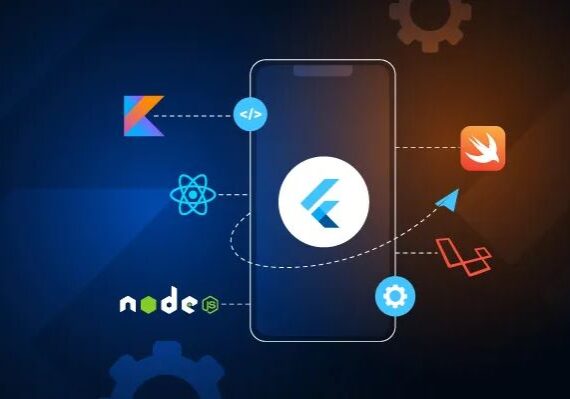Flutter: Revolutionizing Mobile App Development

In the ever-evolving landscape of mobile app development, developers constantly seek innovative tools and frameworks to enhance efficiency, productivity, and user experience. One such groundbreaking technology that has gained immense popularity and traction in recent years is Flutter. Developed by Google, Flutter has revolutionized the way developers create visually appealing and high-performance cross-platform applications. This open-source UI software development toolkit empowers developers to build natively compiled applications for mobile, web, and desktop from a single codebase. In this article, we will explore the key aspects of Flutter, its features, benefits, and its impact on the world of mobile app development.
Understanding Flutter:
Flutter, introduced in 2017, has rapidly emerged as a preferred choice for developers due to its flexibility and robustness. It utilizes the Dart programming language, which is renowned for its speed and performance. Unlike traditional app development frameworks, Flutter adopts a reactive programming approach, enabling developers to create interactive and visually appealing user interfaces.
Key Features of Flutter:
1. Hot Reload:
One of the standout features of Flutter is its "Hot Reload" capability. This feature allows developers to see the changes made in the code in real-time, instantly reflecting them in the app's interface. This significantly reduces development time and enhances the iterative process, enabling developers to experiment and refine their designs efficiently.
2. Single Codebase:
Flutter's single codebase approach is a game-changer for cross-platform development. Developers can write code once and deploy it on both iOS and Android platforms, eliminating the need to maintain separate codebases for different platforms. This not only saves time and effort but also ensures consistency across multiple devices and operating systems.
3. Rich Set of Widgets:
Flutter offers an extensive collection of customizable widgets that facilitate the creation of stunning and intuitive user interfaces. These widgets range from basic elements like buttons and text fields to complex components such as animations and gestures. The availability of a wide variety of pre-designed widgets simplifies the development process and allows developers to focus on building unique features.
4. Access to Native Features:
Flutter provides developers with direct access to native features and APIs of the underlying platform, enabling seamless integration of device-specific functionalities. This ensures that Flutter apps can leverage all the capabilities of the host platform, providing users with a native-like experience.
5. Performance Optimization:
Flutter's architecture is designed for optimal performance. The framework compiles the Dart code to native machine code, eliminating the need for a JavaScript bridge. This results in faster startup times and smoother animations, enhancing the overall user experience.
Benefits of Flutter:
1. Faster Development:
Flutter's hot reload feature accelerates the development process by allowing developers to experiment, fix bugs, and make improvements in real-time. This rapid iteration cycle significantly reduces development time, enabling faster delivery of high-quality applications.
2. Cost-Effectiveness:
Since developers can create cross-platform applications with a single codebase, businesses save substantial costs associated with developing separate apps for iOS and Android. Flutter's cost-effectiveness has made it a popular choice for startups and small businesses with limited budgets.
3. Consistent User Experience:
Maintaining a consistent user experience across different platforms is crucial for the success of any application. Flutter ensures uniformity in the app's look and feel, regardless of the device or operating system, leading to higher user satisfaction and engagement.
4. Vibrant Community and Support:
Flutter boasts a vibrant and active community of developers, designers, and enthusiasts. This community-driven approach results in extensive support, a plethora of third-party packages, and a wealth of knowledge-sharing resources. Developers can readily find solutions to their problems and stay updated with the latest trends and best practices.
5. Scalability:
Flutter is highly scalable, making it suitable for a wide range of applications, from simple mobile apps to complex enterprise solutions. Its flexibility allows developers to scale the application as per the evolving requirements of the business, ensuring long-term viability.
Flutter in Practice:
Flutter has been embraced by various industries and businesses, ranging from startups to Fortune 500 companies. Several well-known applications, including Google Ads, Alibaba, and Reflectly, have been developed using Flutter. Its ability to deliver visually appealing and high-performance applications has made it a top choice for mobile app development companies worldwide.
